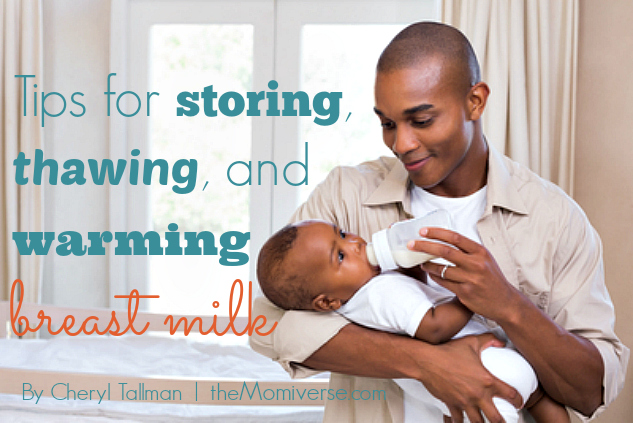While circumstances may vary from mom to mom, breastfeeding can be the ultimate bonding experience between you and your baby. You will cherish it forever! Sometimes it’s not always easy to breastfeed your baby directly so storing breast milk for safe consumption later is very important.
Here are some tips for safely storing breast milk:
- Wash your hands with soap and water before expressing milk and be sure the area where you are working is clean.
- If you have trouble getting the milk to flow, keep an item that reminds you of your baby close by, this can really help!
- If you still have trouble expressing milk, apply warm moist compresses and gently massage the breasts for a few minutes.
- Be sure to store the milk in clean, BPA-Free containers with lids, covered ice cube trays or freezer-safe storage bags.
- Label the container with the date. Add your child’s name if you are taking it to a childcare provider.
- Store milk in the coldest part of the refrigerator or freezer.
- Always use the oldest dated milk first.
- Do not mix fresh milk and frozen milk in the same container.
- Milk left in a baby bottle after a feeding should be thrown out. Do not save it for use at another feeding.
Here are some tips for safely thawing and warming breast milk:
- Thawing breast milk in the refrigerator is the best method. If time is an issue, breast milk can be thawed quicker in a closed container or bottle under cool running water.
- Some babies accept breast milk right from the refrigerator and others prefer it warm.
- To warm the breast milk, gradually increase the temperature of the water to warm the milk or immerse the container in a pan of water that has been heated on the stove.
- Do not heat the breast milk directly on the stove.
- Never bring the temperature of breast milk to boiling point.
- Avoid using a microwave oven to thaw breast milk. They do not heat liquids evenly and the oven’s high temperatures could destroy nutrients in the breast milk.
- Always check the temperature of the milk before feeding your baby.
- Do not re-freeze breast milk once it has been thawed.
| Type | Condition | Life |
| Fresh | Room temperature | 6-8 hours |
| Fresh | Insulated cooler bag with ice packs | 24 hours |
| Fresh | Refrigerator | 8-10 Days |
| Frozen | Freezer within refrigerator | 2 weeks |
| Frozen | Freezer with separate door | Up to 6 months |
| Frozen | Chest or upright deep freezer | Up to 12 months |
| Thawed | Refrigerator | 24 hours |
Source: Academy of Breastfeeding Medicine
This Week's Articles Read, learn, live
-
 Summertime grilled vegetables
Summertime grilled vegetables
-
 5 Ways to make this summer full of unforgettable family fun
5 Ways to make this summer full of unforgettable family fun
-
 10 Reasons to take a family vacation in Puerto Vallarta
10 Reasons to take a family vacation in Puerto Vallarta
-
 5 Fun tips for spring cleaning with kids
5 Fun tips for spring cleaning with kids
-
 10 chick flicks with New Year’s Eve scenes
10 chick flicks with New Year’s Eve scenes
-
 The day after Christmas: 5 ways to handle the biggest downer of the year
The day after Christmas: 5 ways to handle the biggest downer of the year
